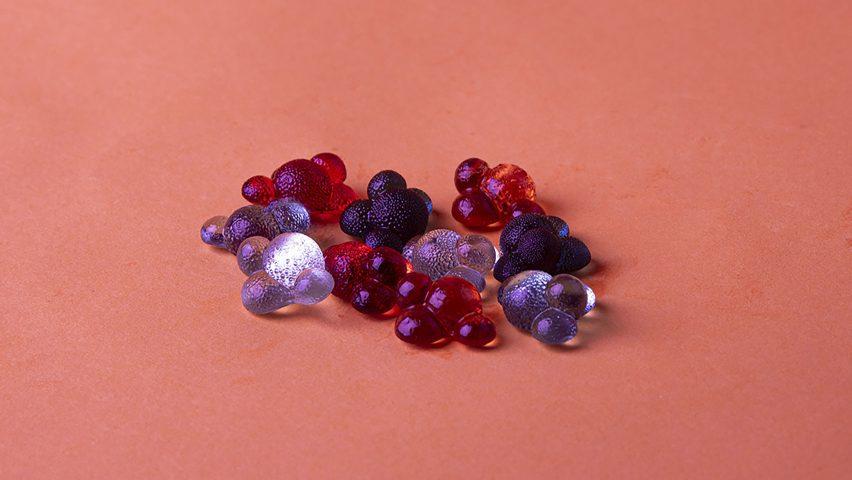
Waste textiles turned into sweets in FabriCandy project
Scraps of fabric have been recycled into edible treats by designer Jinghan Li, who wants people to consider waste as a resource for food.
Li undertook the FabriCandy project as part of her masters in biodesign at London's Central Saint Martins (CSM) college, producing an array of colourful confections.
She made the candies by applying the enzyme cellulase to natural fabrics, which breaks down their cellulose content into glucose.
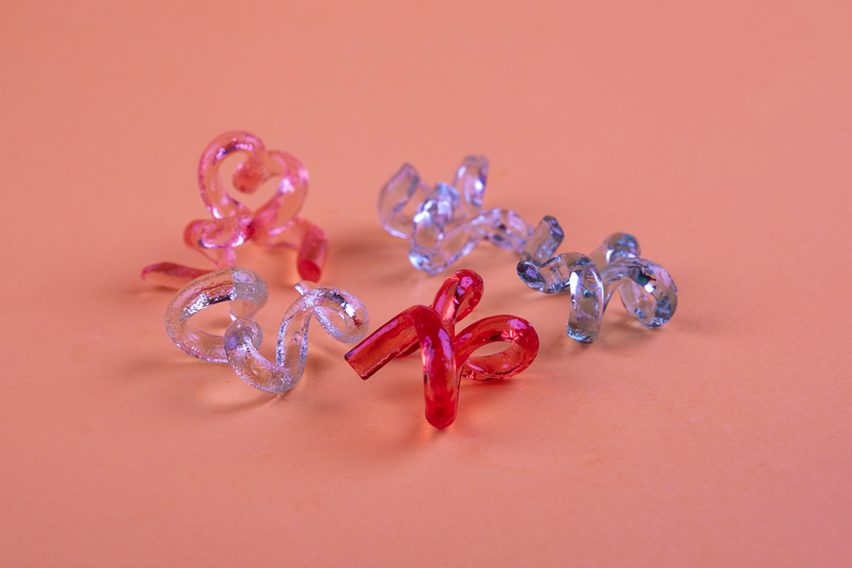
For cotton, which is made of more than 90 per cent cellulose, that means almost all of the fabric was effectively broken down, leaving only a small amount of residue.
Cellulose is made of a long chain of glucose molecules so the process, known as enzymatic hydrolysis, simply involves breaking the bonds that connect them.
The resulting glucose could theoretically be used to make biofuels or bioplastics, according to Li. However, she chose instead to explore its potential as a raw material for the food and beverage industries.
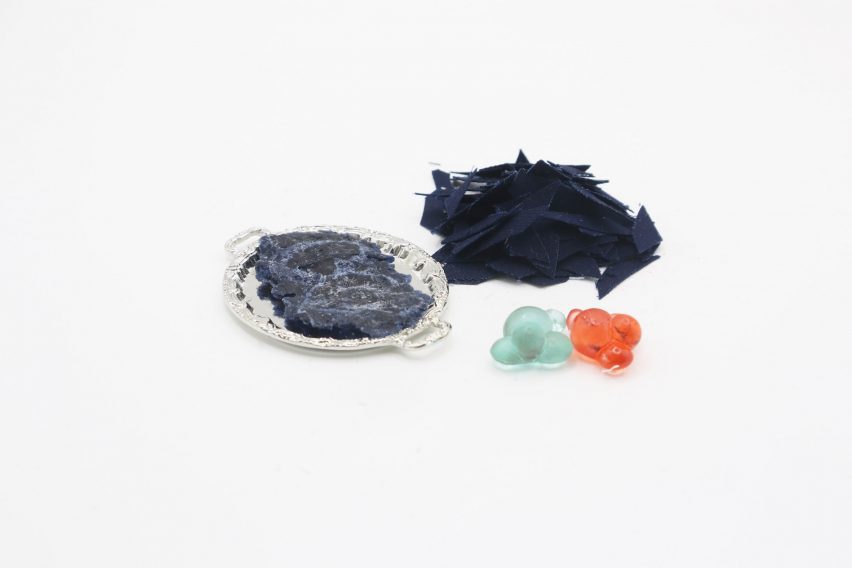
"It may be hard for the public to accept that waste streams can become resources for food due to hygiene concerns," said Li. "But most basic materials like cotton and wood are natural materials that existed before industrialisation."
"As we continue to obtain resources from nature, we ought to utilise them as much as possible."
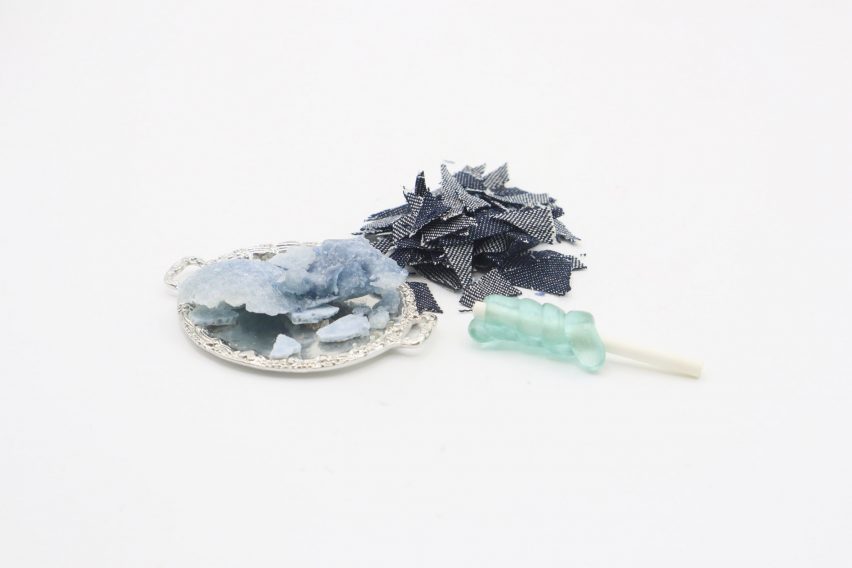
Li previously studied biology and did all the research and experiments for FabriCandy herself in CSM's GrowLab, successfully producing glucose and then sweets from her fabric scraps.
As well as the cotton, Li worked with linen and a polycotton blend for the project, the latter of which left its synthetic fibres behind as residue.
She turned the different fabrics into different sweets, dyed bright with food colouring. Denim she turned into a blue, spiral-shaped sucker that is meant to evoke the sturdy and rough feeling of the textile.
Cotton is a squidgy-looking multicoloured sweet called Above Clouds, while linen-based orange Linenergy has a twisted shape to mimic the characteristics of linen fibre. The cotton and PET blend was turned into spheres reminiscent of glass marbles that she calls Shiny-Shiny.
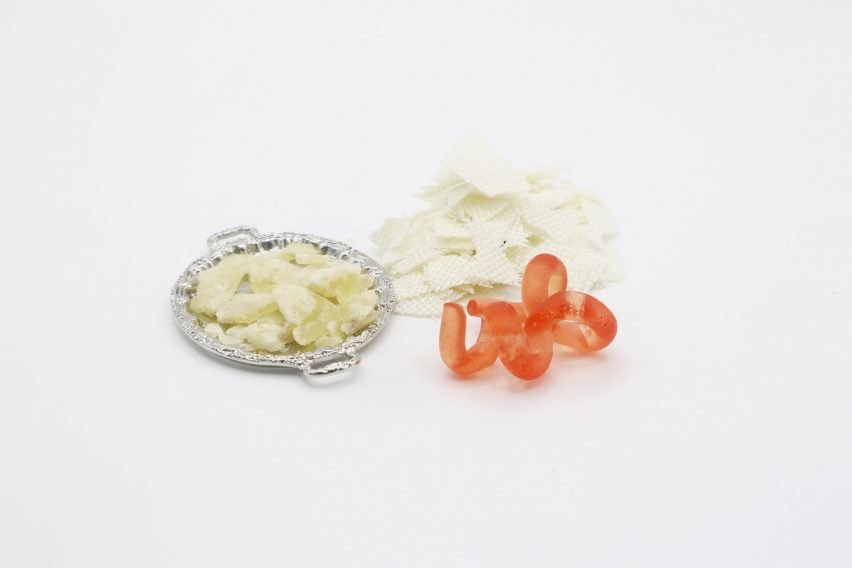
While Li used waste fabric donated to CSM for FabriCandy, she envisages any future iteration using scraps from the garment industry, where she says 15 per cent of fabric is wasted during pre-production and not always recycled.
She said that allowing waste to be used in more unconventional ways means more opportunities to create a closed loop, where all material is ultimately either recycled or returned to the earth.
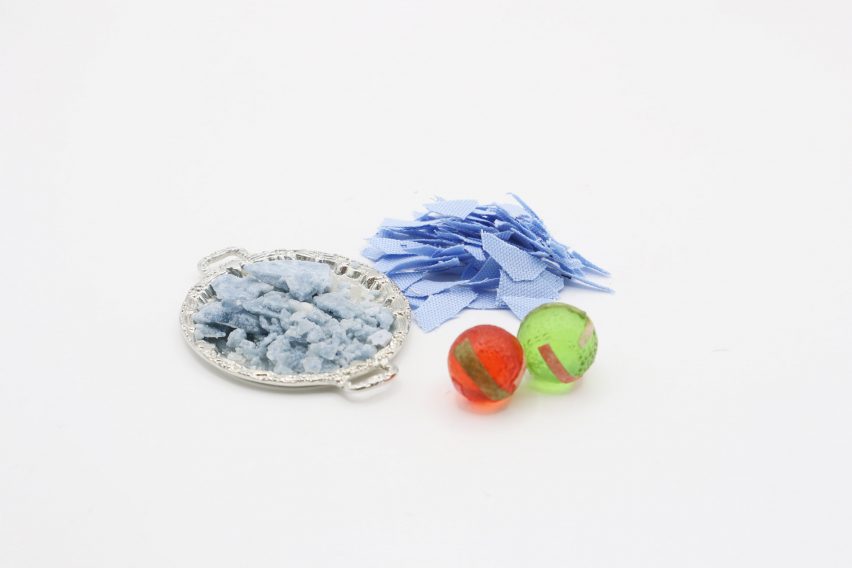
"When we talk about sustainability and closing the loop, it's usually within one industry," Li said. "I want to create a potential solution for waste management that achieves a closed loop cross different industries, where waste from one industry can become raw material for another industry."
Unlike 2023 CSM graduate Eleonora Ortolani, who wasn't allowed to taste the vanilla flavouring she synthesised from plastic, Li has been able to sample her candies and reports they are "sweet indeed".
However, she has said more testing would be necessary before they could be declared safe for humans to eat.